Hvar, Brac, Vis, Pakleni Islands, Korcula... those are only a few amazing destinations on your sailing holiday in Central Dalmatia.
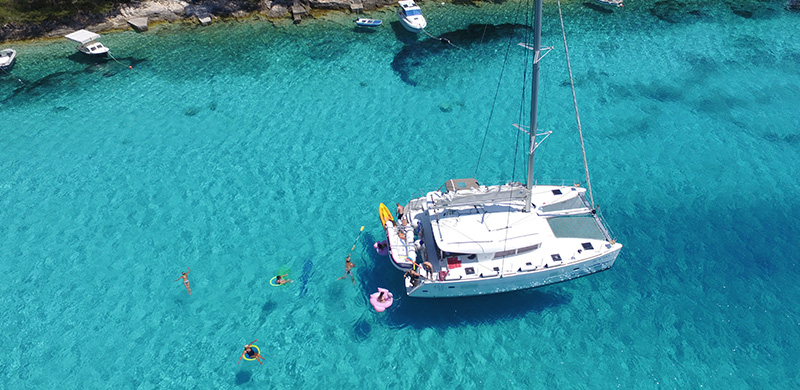
Islands in this area are bigger compared to ones in the North Dalmatia, but they have interesting towns and villages. It's also important to mention that, one-way sailing trips from Split to Dubrovnik are quite an interesting route and they are easier to organize from this area than from the North Dalmatia.
The most popular sailing region in Croatia, due to it's great nautical and tourist offer, good traffic connections (Split airport, ferry port in Split, highway connection, bus and train stations), and a big number of marinas all situated in Split or quite close to it.
Starting ports located around Split and very close to the Split airport are Kastela, Trogir, Split (3 marinas), Rogac on the island of Solta, Primosten, Rogoznica, Baska Voda, Makarska, and Tucepi.
Split airport is very well connected with all major European cities and some of the low-cost airline companies have expanded their flight schedules to Split, especially during the season. The split port offers a constant connection to all Central Dalmatian islands (Solta, Brac, Hvar, Vis, Lastovo, Korcula) as well as everyday ferry line to Ancona in Italy.
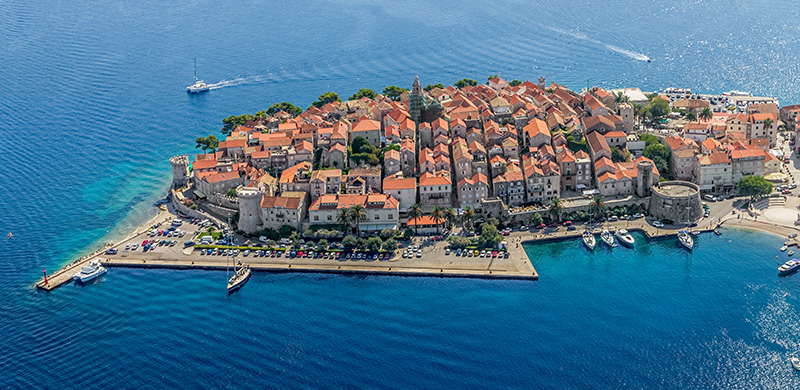
If you sail off to the sea, the routes will take you to Hvar, Brač, Vis, Šolta, Korčula or Lastovo. These are the islands of rich history and tradition, unique beauty and natural phenomena. One of them is the sea cave Modra špilja on the island of Biševo, where the sun rays break turning the sea into blue silver. Central Dalmatia stretches from the river Krka in the northwest down to Makarska.
From the town of Primosten and towards the southwest, Dalmatia's landscape varies. There are larger islands which are quite far apart from each other and are rich in vegetation. With the islands being so far apart, the maestral wind blows quite strongly through the canals in between the islands and, as a result, the waves get quite rough. Some of the larger islands are Brac, an island of Hvar, an island of Vis, Solta, Ciovo, Drvenik (Large and Small), Bisevo, and Jabuka. Each island offers great hospitality and is unique and beautiful in its own way.
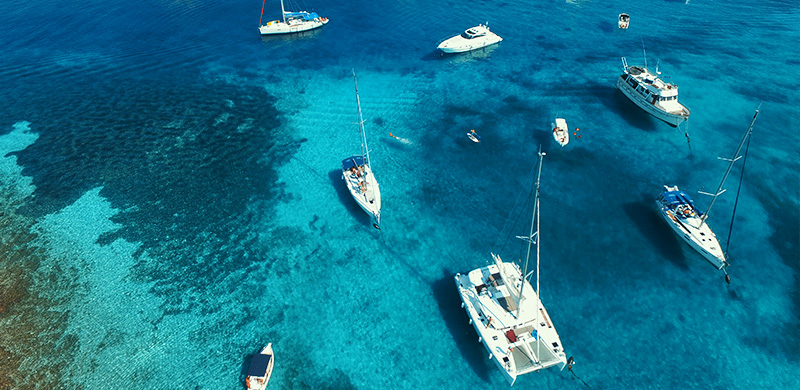
The islands of Central Dalmatia differ from one another. For example, the island of Solta is small and quiet and lies right across from the city of Split. The Island of Brac is the largest island in Central Dalmatia as well as one of the most developed in regards to tourism. Some of the main tourist spots on the island are Bol, Supetar, and Mline as well as many others. The island of Hvar is also a well-known tourist destination and has the cities of Hvar, Stari Grad (Old City), Jelsa, Vrbovska, and Sucuraj. Vis, with its many coves, inlets and untouched nature, is leaning more and more towards tourism. The town of Komiza is one of the better-known fishing towns in Central Dalmatia. The island of Bisevo is unique because of its dark caves which are considered an unbelievable natural phenomenon. On the mainland, along with the coastline, there is the city of Split and its surrounding towns and villages. A split is the most populated and it is the center of this region's economy as well as the largest maritime destination in Croatia. In Central Dalmatia, there are two sites which are under the protection of UNESCO: Diocletian's palace in Split and the old town in the heart of Trogir. The split is the center of the Split-Dalmatian County which makes the city a major and central tourist destination in Central Dalmatia.
North of Split is the city of Trogir. Trogir is one of the most well-preserved historical cities not just on the Adriatic but in the whole of Central Europe. Trogir's medieval nucleus, surrounded by a stone wall, includes a very well-preserved castle and tower as well as many other buildings and palaces which origin from the Roman, Gothic, Renaissance, and Baroque periods.
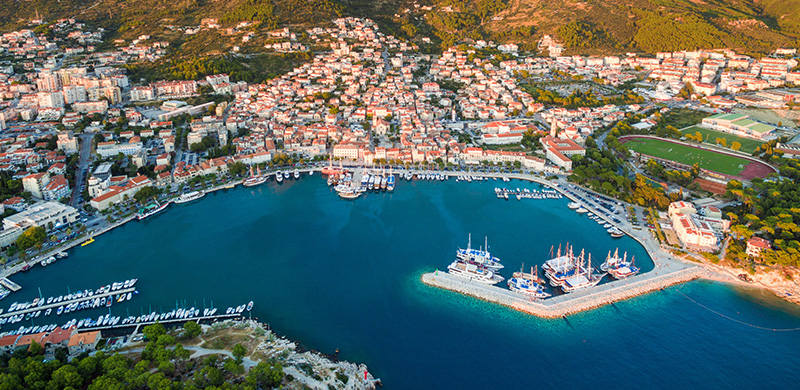
The Makarska Riviera is one of the most visited destinations in the Central Dalmatian region. Some of the towns in this region are Brela, Baska Voda, Makarska, Tucepi and Ploce.
The city of Makarska stands out in particular due to its beautiful sandy beaches surrounded by pine trees and the mountain of Biokovo standing in its background with its fantastic natural park. Today, Biokovo has become an attractive tourist spot because of its natural beauty. The botanical garden Kotisina on Biokovo was established in the year 1984 as a horticultural monument whose main purpose is to preserve its nature. Biokovo is also great for the active tourist who enjoys hiking and climbing.
Central Dalmatia is beautiful, colorful, diverse and exciting. It has so much to offer from islands to the mainland and highlands. Come and explore its beauty and history while enjoying some fun in the sun.
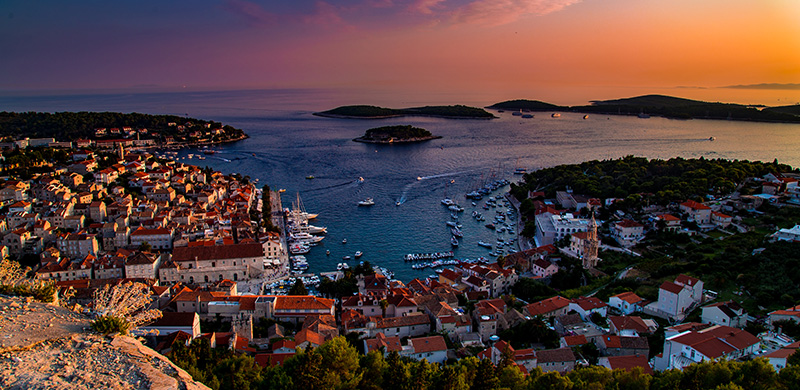
7 DAYS: Sailing from Split towards Maslinica, Komiža, Vis, Hvar (Palmižana), Stari Grad, Milna (island of Brac)
Alternatively: The bays of Šolta (Necujam), Stoncica, Šcedro, Vrboska, Jelsa, Bol, Lucice Bay.
Special moments: the fisherman's town of Komiža, the Blue Grotto on Biševo, Budihovac and other Vis islets, the Paklinski (Pakleni) islands, the bays of Hvar and Brac.
What to look out for: a strong mistral on the sea around Vis and the Hvar channel, the shallows, and reefs along the southeastern shores of Vis. It is not easy to suggest a seven-day voyage through the central Dalmatian islands; one could enjoy wandering three or four days just around Vis and Biševo or just along the bays of Šolta or just around Brac, and then to the Bol – Jelsa – Vrboska – Stari Grad triangle. Then during the next three days touring the stunning coves of the Paklinski islands or Šcedro… To say nothing of the beauty of the southern coast of Korcula or the challenges of Lastovo… Two weeks would not suffice for a true central Dalmatian tour! We will limit ourselves, therefore, to only one of the possible proposals.
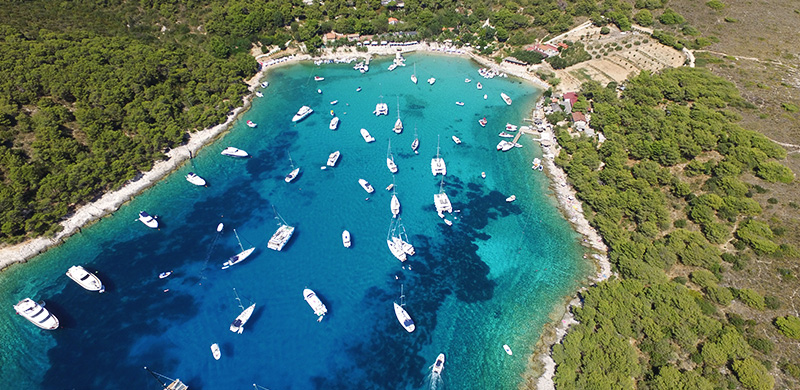
On day one it will be enough to sail the 19 miles from Split to Maslinica on the island of Šolta (only 9 miles from Trogir). The islets off Maslinica from the western cape on Šolta form a very nice group. Directly neighboring Maslinica is Šešula Bay. (Maslinica is easily confused with a destination closer to the coast, Necujam Bay with its five or six well-protected branches. Roman Emperor Diocletian's fishpond was located in the southernmost branch – a wall from it has been preserved 1.5 meters under the present sea level.
Head out on the open seas on day two – its 25 miles of open water to Komiža (29 miles from Necujam); with the mistral blowing off your starboard side it should be a pleasant sail. Off Cape Barjaci on Vis, you'll be awaited by somewhat larger waves as the mistral picks up strength.
In Komiža, if you find a free berth, draw in behind the breakwater were there are moorings, electricity, and water available. Evening in Komiža will pass quickly, and if you get into a conversation with one of the older locals about Palagruža, the falkuša sailboats, the Komiža pogaca pastry, and salted anchovies, you'll hear wistful tales of the glorious history of fishing and how fishing is holding up these days, still almost the only source of income in this place, reminiscent of southern seas. (The food and ambient is excellent at the Bako and Jastožera restaurants).
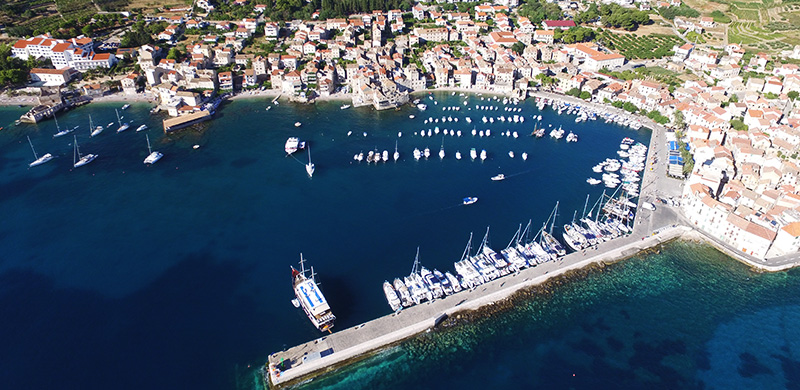
Start the next morning by making the 5 miles out to Biševo; try to drop anchor off the entrance to the Blue Grotto, and if you don't succeed in this, have the crew make trips in turns to the cave – someone should always be on the boat.
If you can swim into the cave the experience will be all the more exciting! The fantastic effect of the play of light in the cave depends on the position of the sun and is best around 11 o'clock or at noon. The Mediterranean monk seal used to live here and is still seen from time to time in the Adriatic. After the beauty of the Blue Grotto, and before casting off to sail the southern shores of Vis, round Biševo to its other side to Salbunare Bay or to Porta (Biševo ports). When sailing along the cliffs of the Vis coast find Stiniva, a natural phenomenon featuring a beach set between the rocks. Right next to it is Mala Travna in which local Vis poet and environmentalist Senko Karuza sells his wine and cooks in the local style during the summer. Be sure to drop anchor if only for a short stop off the islet of Budihovac: you'll find clear water in a shallow lagoon that can be entered only from the south. You'll anchor under the vineyards where one of the island's finest Plavac wine grapes is maturing.
Round the northeastern cape of Vis by evening and make for the Vis harbor (or alternatively: drop anchor off beautiful and gentle Stoncica; there is an excellent restaurant there owned by the Lincir brothers where, besides fish, you can order goat meat). In Vis, just as in Komiža there are equipped berths on a long waterfront. There is also a gas station here; right were the waterfront of Issa was in the antiquity. You can also berth in Kut, the oldest and best-looking part of the harbor on its southeast. There are two culinary rarities here, the Vatrica and Pojoda restaurants, the latter a top-notch affair owned by Zoran Brajcic. That will bring the days total to about 23 miles.
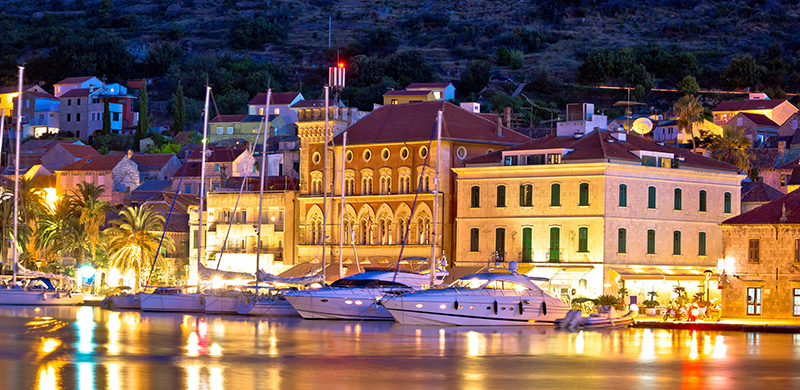
On day four it is already time to start heading back, for a start definitely to Hvar (14 miles). It is your choice whether to make for the crowds in Hvar's harbor itself, the greenery of Palmižana marina on the Paklinski islands or the peace of one of the ten or so bays along their southern coasts; from the marina, you can take their boat across to the city of Hvar. Hvar is simply Hvar – you have to experience it. Squeezed into a small area is an ancient patrician city with a wealth of history that is justly a favorite with many tourists. In the bevy of restaurants, you can find excellent eating at the Bracanovic family's Luvij wine konoba or at the Lukulusu.
Round Cape Pelegrin next morning towards Stari Grad (15 miles). You can stop for a swim on your way in the nice coves on the northern coast or in the dozen inlets of port Tiha under the northern cape of Stari Grad Bay. In this deep and wide bay, you will discover Hvar's other face: a town of fishermen, farm hands and narrow streets in the midst of which Petar Hektorovic's 16th-century Tvrdalj, a fortified villa, proudly stands with its renowned fish pond as a centerpiece. Like on Vis, here too you will find equipped berths with moorings and an abundance of cozy restaurants on the beautiful narrow streets. You have sailed into the island's oldest settlement, an ancient Greek colony.
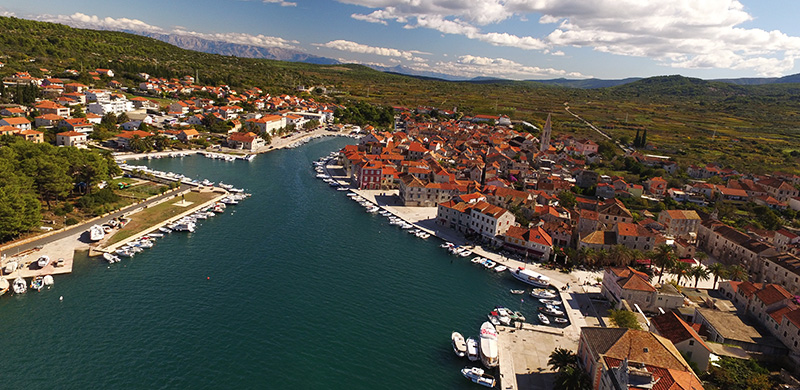
Day six should be used to wander with your boat to the numerous bays towards Vrboska, Jelsa and on to the east, but if you do not want to leave too many miles ahead of you on the last day, point your prow towards Milna on the island of Brac (15 miles from Stari Grad). You will find two marinas there. (If you have the time, before passing through Splitska Vrata on your way to Milna, take a swim in one of the many inlets of the wonderful and densely forested Lu?ice Bay, only two miles from Splitska Vrata to the southeast.)
For tomorrow's return to Split, you have only some ten miles to cross (18 to Trogir) so that there is time for another swim in one of the bays on your way, either those on Brac (near Bobovšcica) or on Šolta (Stipanska, Lestimanova or Krušcica).
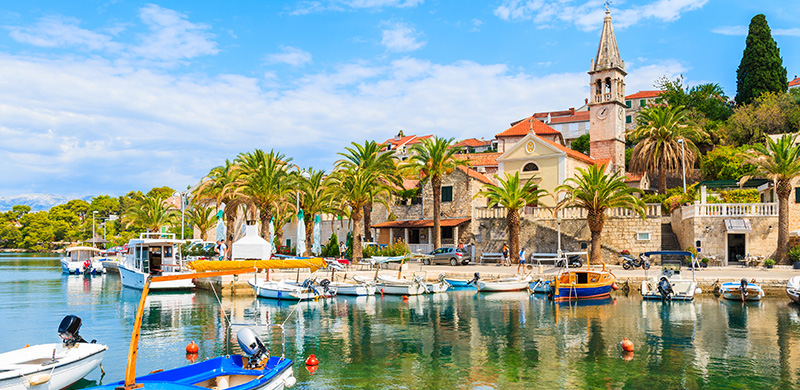
E-mail:
Whatsapp us:
Danielis Yachting Business WhatsApp
Skype:
Call us:
Booking agents:
Tea, (English, Italian, Russian):
Ante, (English):
Andreja, (English, German):